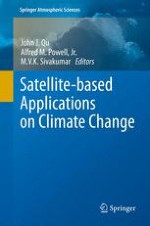2013 | OriginalPaper | Buchkapitel
10. Assessing Hurricane Intensity Using Satellites
verfasst von : Mark DeMaria, John A. Knaff, Raymond Zehr
Erschienen in: Satellite-based Applications on Climate Change
Verlag: Springer Netherlands
Aktivieren Sie unsere intelligente Suche, um passende Fachinhalte oder Patente zu finden.
Wählen Sie Textabschnitte aus um mit Künstlicher Intelligenz passenden Patente zu finden. powered by
Markieren Sie Textabschnitte, um KI-gestützt weitere passende Inhalte zu finden. powered by
